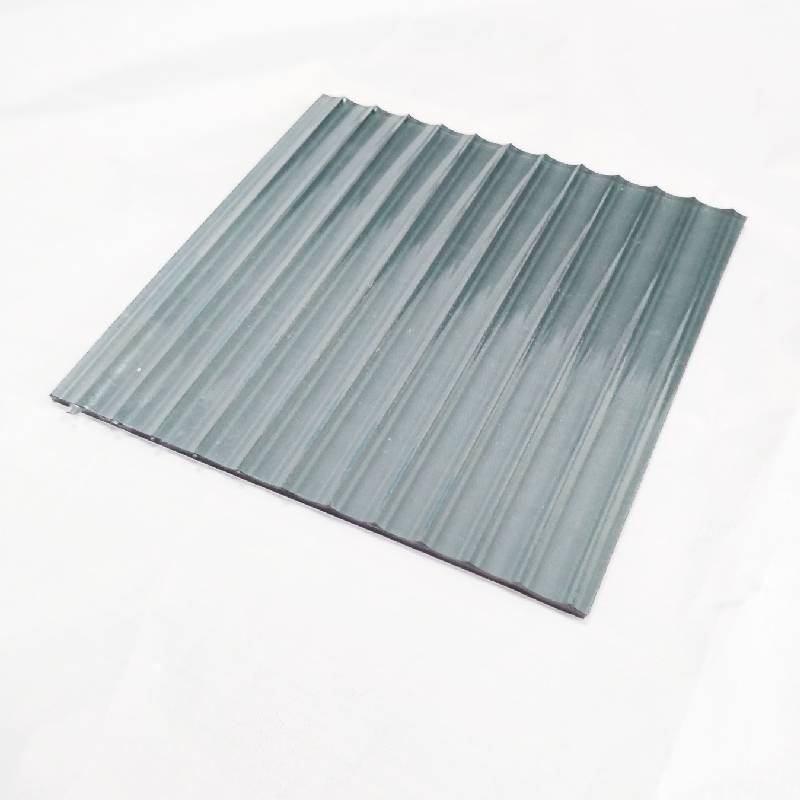Understanding Types of Architectural Glass
Architectural glass is a fundamental building material that significantly influences the aesthetics, functionality, and energy efficiency of structures. With advancements in technology and design, various types of architectural glass have emerged, each offering unique benefits suited to specific applications. This article explores the most common types of architectural glass and their features, advantages, and uses in modern construction.
1. Clear Glass
Clear glass is the most basic type of architectural glass and is widely used in windows and facades. It provides excellent clarity and transparency, allowing natural light to illuminate interior spaces. Clear glass is often used in residential and commercial buildings where unobstructed views and light transmission are desired. However, it has limited thermal insulation properties and may require additional treatments, such as Low-E coatings, to improve energy efficiency.
2. Tinted Glass
Tinted glass is manufactured by adding metallic or ceramic oxides during the glass production process, which impart color to the glass. This type of glass helps to reduce glare and heat gain from sunlight, making it ideal for buildings in hot climates. Tinted glass is available in various colors and can enhance the aesthetic value of a structure. It is frequently used in high-rise buildings, office spaces, and commercial applications where glare reduction and heat control are essential.
3. Reflective Glass
Reflective glass features a thin metallic coating that reflects solar energy, significantly reducing heat absorption and glare. This type of glass is often used in commercial buildings, skyscrapers, and modern homes to enhance energy efficiency and privacy. The mirrored appearance can also add a sophisticated look to a building's facade. Reflective glass is best suited for locations with intense sunlight, as it helps maintain comfortable interior temperatures.
4. Low-E Glass
types of architectural glass
Low-E (low emissivity) glass is designed to minimize heat transfer while allowing maximum natural light to enter a building. This type of glass is coated with a microscopically thin layer of metal that reflects infrared light while allowing visible light to pass through. Low-E glass is particularly effective in reducing heating and cooling costs and is commonly used in energy-efficient buildings. Its versatile applications make it suitable for residential, commercial, and institutional structures.
5. Laminated Glass
Laminated glass consists of two or more layers of glass bonded together with a layer of plastic (usually polyvinyl butyral, PVB) in between. This combination enhances safety and security, as laminated glass holds together when broken, reducing the risk of injury from shattered glass. It also provides sound insulation, making it an excellent choice for buildings situated in noisy environments. Furthermore, laminated glass can be treated for UV protection and is often used in skylights, glass roofs, and safety glass applications.
6. Insulated Glass
Insulated glass units (IGUs) are made by sandwiching a layer of air or gas (such as argon) between two panes of glass. This design significantly improves thermal insulation, reducing heat loss in winter and heat gain in summer. Insulated glass is commonly used in residential windows and commercial facades to enhance energy efficiency and comfort. With the increasing focus on sustainability, insulated glass has become a standard in modern architecture.
7. Smart Glass
Smart glass technology is an innovative advancement that allows users to control the transparency of the glass through electrical, thermal, or chemical means. This feature enables buildings to adapt to changing light and climate conditions, enhancing comfort and energy efficiency. Smart glass can be used in commercial and residential applications, such as conference rooms, privacy windows, and smart facades.
Conclusion
The diverse types of architectural glass play a critical role in shaping contemporary architecture. Each type offers specific advantages, from aesthetic appeal to energy efficiency and safety. Understanding these various glass options enables architects and builders to make informed decisions that align with their design goals and sustainability objectives. As technology continues to evolve, the possibilities for architectural glass will expand, providing even more innovative solutions for modern building challenges.
 Afrikaans
Afrikaans  Albanian
Albanian  Amharic
Amharic  Arabic
Arabic  Armenian
Armenian  Azerbaijani
Azerbaijani  Basque
Basque  Belarusian
Belarusian  Bengali
Bengali  Bosnian
Bosnian  Bulgarian
Bulgarian  Catalan
Catalan  Cebuano
Cebuano  Corsican
Corsican  Croatian
Croatian  Czech
Czech  Danish
Danish  Dutch
Dutch  English
English  Esperanto
Esperanto  Estonian
Estonian  Finnish
Finnish  French
French  Frisian
Frisian  Galician
Galician  Georgian
Georgian  German
German  Greek
Greek  Gujarati
Gujarati  Haitian Creole
Haitian Creole  hausa
hausa  hawaiian
hawaiian  Hebrew
Hebrew  Hindi
Hindi  Miao
Miao  Hungarian
Hungarian  Icelandic
Icelandic  igbo
igbo  Indonesian
Indonesian  irish
irish  Italian
Italian  Japanese
Japanese  Javanese
Javanese  Kannada
Kannada  kazakh
kazakh  Khmer
Khmer  Rwandese
Rwandese  Korean
Korean  Kurdish
Kurdish  Kyrgyz
Kyrgyz  Lao
Lao  Latin
Latin  Latvian
Latvian  Lithuanian
Lithuanian  Luxembourgish
Luxembourgish  Macedonian
Macedonian  Malgashi
Malgashi  Malay
Malay  Malayalam
Malayalam  Maltese
Maltese  Maori
Maori  Marathi
Marathi  Mongolian
Mongolian  Myanmar
Myanmar  Nepali
Nepali  Norwegian
Norwegian  Norwegian
Norwegian  Occitan
Occitan  Pashto
Pashto  Persian
Persian  Polish
Polish  Portuguese
Portuguese  Punjabi
Punjabi  Romanian
Romanian  Russian
Russian  Samoan
Samoan  Scottish Gaelic
Scottish Gaelic  Serbian
Serbian  Sesotho
Sesotho  Shona
Shona  Sindhi
Sindhi  Sinhala
Sinhala  Slovak
Slovak  Slovenian
Slovenian  Somali
Somali  Spanish
Spanish  Sundanese
Sundanese  Swahili
Swahili  Swedish
Swedish  Tagalog
Tagalog  Tajik
Tajik  Tamil
Tamil  Tatar
Tatar  Telugu
Telugu  Thai
Thai  Turkish
Turkish  Turkmen
Turkmen  Ukrainian
Ukrainian  Urdu
Urdu  Uighur
Uighur  Uzbek
Uzbek  Vietnamese
Vietnamese  Welsh
Welsh  Bantu
Bantu  Yiddish
Yiddish  Yoruba
Yoruba  Zulu
Zulu 

